Covid in Scotland: Shops most common mention in traced virus cases
- Published
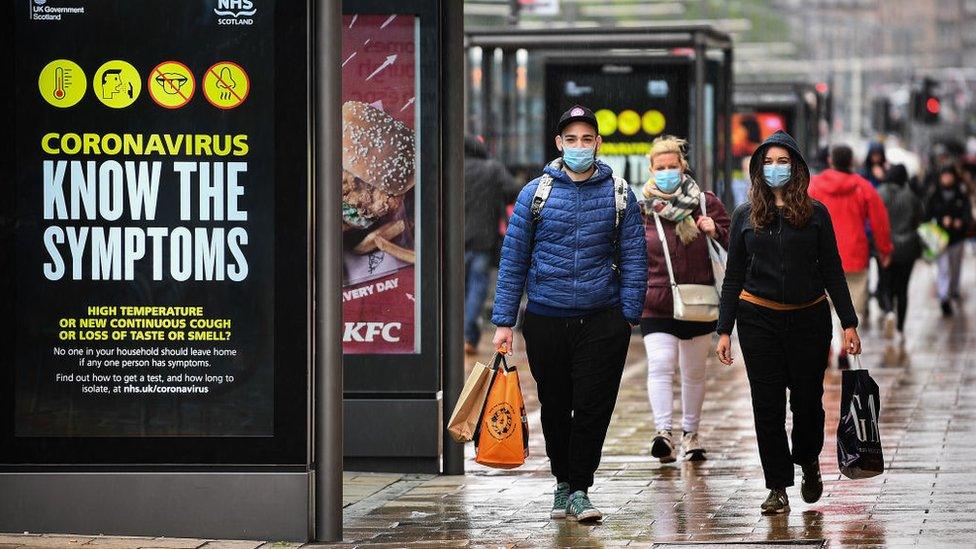
With the easing of Covid restrictions allowing non-essential shops and hospitality to operate in more parts of Scotland, we examine the data which logs what people say they were doing prior to their positive test.

The Scottish government set out a "test and protect" strategy in May 2020 which was designed to minimise the spread of coronavirus.
So, how does it work? When an individual receives a positive result, a team of contact tracers are tasked with finding out where they had been and who they had been around.
What is gathered helps build a picture about the virus, but crucially, this is not a scientific exercise so it it does not answer the question about where that person contracted Covid-19.
Since 1 November, Public Health Scotland (PHS) has published "events and settings" data, external for people who have tested positive.
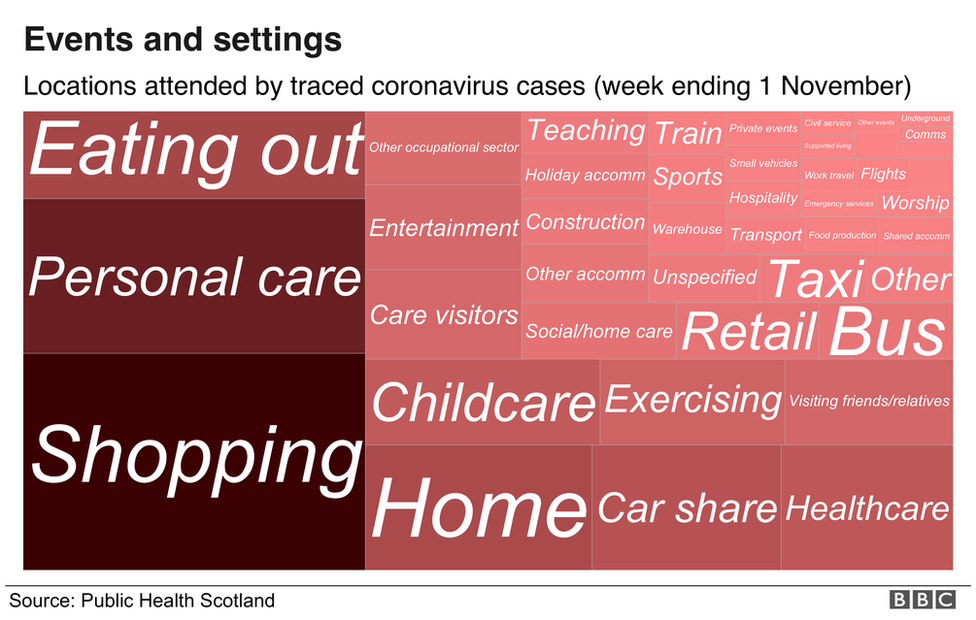
The most up-to-date information shows shops account for 20% of the places visited by people the week before their test.
Nearly 1,500 trips to supermarkets and shopping centres were recorded in the first week of December. And the proportion of shop-related visits has steadily increased despite 11 councils having been in the toughest level for the past three weeks.
Within the data set, locations are broken down into the main categories of events and activities, accommodation, transport, work, and education.
These are then sub-categorised and include things like eating out, shopping, personal care and food production.
The data is not broken down by council or health board, making it hard to establish what impact level four restrictions have had over the last few weeks.
However, the figures appear to show several national trends since 1 November, including increasingly fewer trips for personal care - such as nail salons and hairdressers.
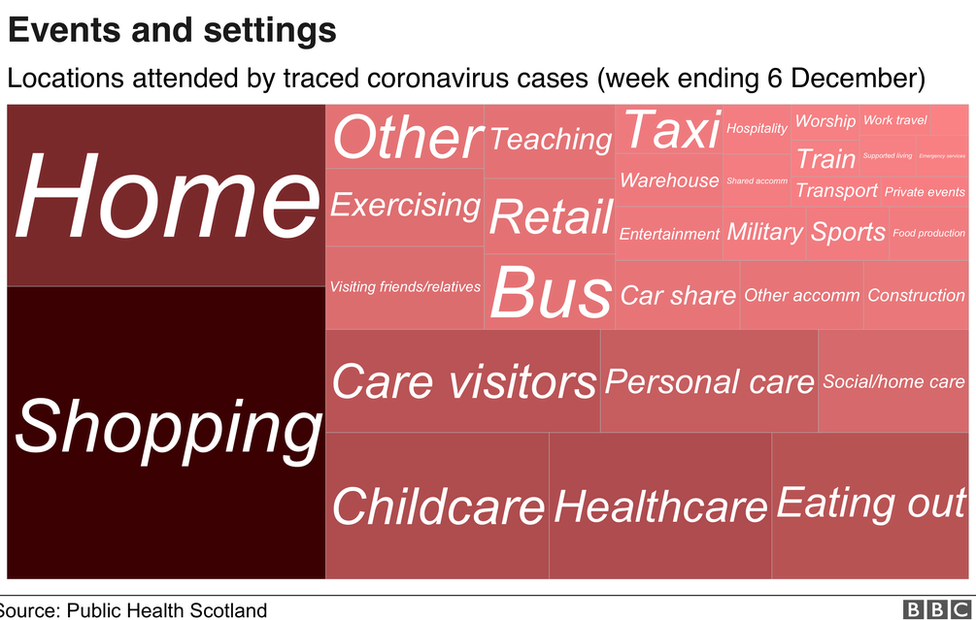
The data for the most recent week shows:
shopping mentions have increased from 17% to 20% over the last six weeks despite non-essential shops being closed in nearly a third of councils areas
a 6% increase in the share of locations linked to people's own or family home since 1 November
educational settings - including schools, nurseries and universities - account for a 7% share of traced settings
the third-highest portion of cases were associated with hospital and care homes, which have increased from 5% to 7%
and "visits to military locations" (71) were traced in the first week of December. That is likely to relate to an outbreak at the Royal Navy's Faslane base on the Clyde
While the number of people testing positive each week is decreasing, the contact tracing data appears to show a shift in behaviour as the Christmas season approaches.
Colin Wilkinson, the managing director of the Scottish Licensed Trade Association (SLTA), said shops were a risk area.
He said retail, unlike pubs and restaurants, were not mandated to have a "test and protect" service.
'We believe shopping is as safe as possible'
Mr Wilkinson added: "And if you go into a shop there's a lot more 'touch points'. You don't wipe down every can, every packet, every item of clothing.
"Now that many areas are moving down to tier three and shops can re-open, you can just see there's going to be a mass influx of people going shopping."
However, a spokesman for the Scottish Retail Consortium said it would be "misleading and irresponsible" to suggest that the transmission of coronavirus was more likely in a retail setting.
He added: "Retailers in Scotland have spent tens of millions of pounds to ensure the safety of colleagues and customers, which includes Perspex screens, hand cleaning facilities, social distancing, and they continue to ensure customers follow government guidance on face coverings and physical distancing.
"As long as customers continue to follow Scottish government and retailer guidance we continue to believe shopping is as safe as possible in these current challenging circumstances."
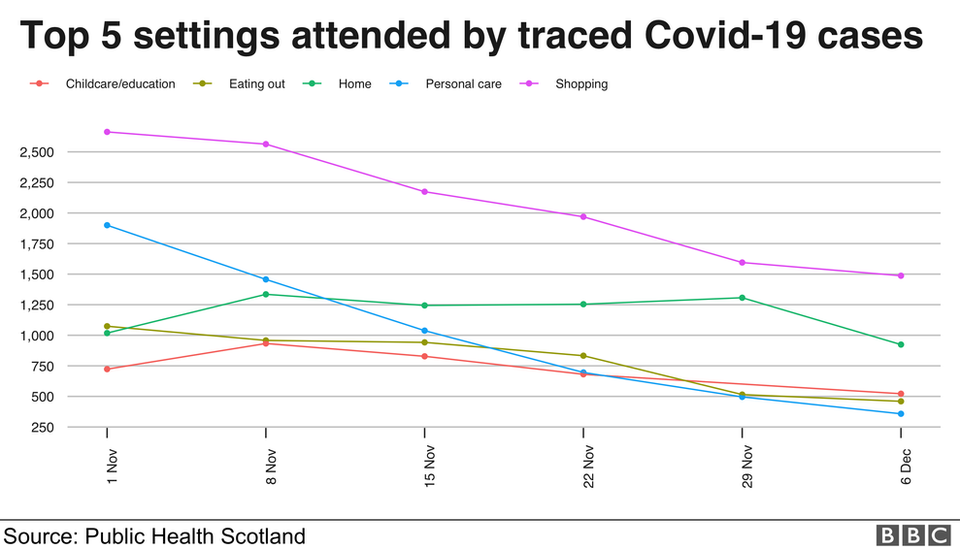
Dr Antonia Ho, a consultant in infectious disease and viral epidemiologist at the University of Glasgow, stressed that the total number of traced settings had decreased significantly from 15,318 to 7,302.
She added that, unlike bars, people do not tend to spend prolonged periods of time or have close contact with others in shops.
Dr Ho explained: "The risk of getting in these settings will more likely relate to touching contaminated items such as shopping trollies and surfaces.
"We know that fomite transmission [like touching contaminated surfaces] do contribute to transmission, but we don't have a good idea of the relative contribution compared to droplet transmission."
She added that it was not surprising shopping and households now have higher relative contributions as these were the only settings most of the Scottish population had been able to access under level four rules.
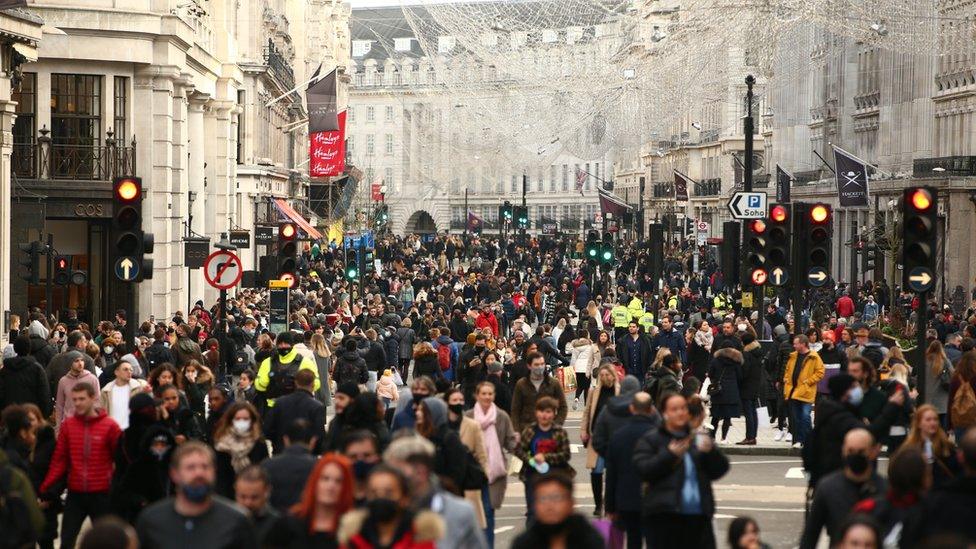
Shoppers embraced a pedestrianised Regent Street in central London last Saturday
At First Minister's Questions on Thursday, Nicola Sturgeon acknowledged that with the lifting of restrictions and the Christmas holidays approaching more people would be going shopping.
She told MSPs that the government had had "recent contact" with nine "major supermarkets" to check that they were ensuring the continued safety of shoppers and staff.
Ms Sturgeon added: "As Christmas approaches I think we all expect that stores will be busier at times and it is therefore all the more important over the next few weeks that the safety of both staff and customers is prioritised.
"I would appeal to all retailers, particularly as level four ends across 11 local authorities for retailers at six tomorrow morning, to be really responsible."
Scotland's National Clinical Director Jason Leitch said he would not like to see the crowded scenes from London's Regent Street last weekend.
He added: "It filled me with absolute dread for London's numbers and their numbers today are up, it's as simple as that,"
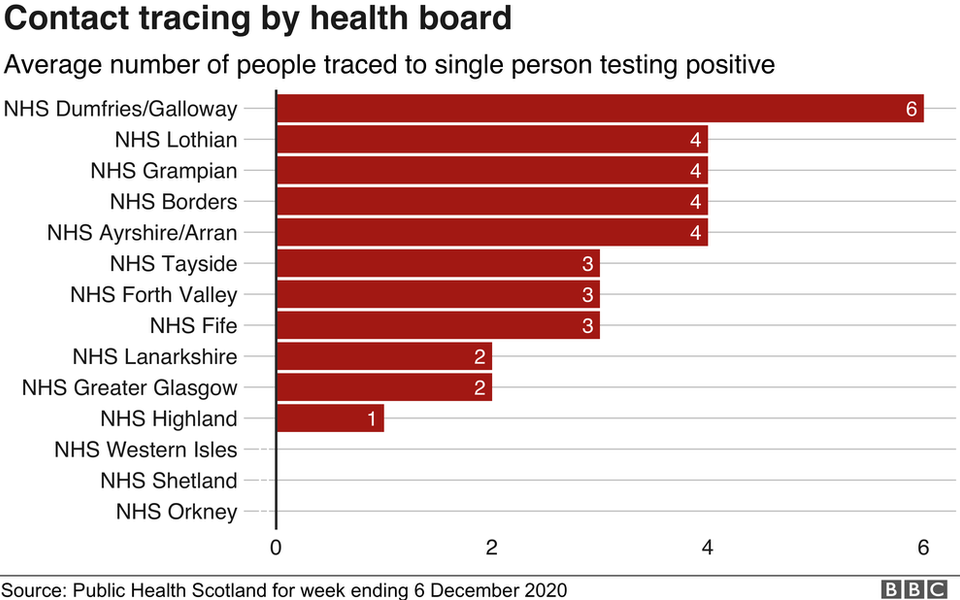
Public Health Scotland also publishes data documenting contact tracing by health board, external.
The weekly figures show a regional breakdown of individuals with a positive Covid-19 test, and the number of unique contacts traced through the "test and protect" system.
In the first week of December, the average number of people traced to a single positive case in Dumfries and Galloway was three times the number in Greater Glasgow.
This could be attributed to the fact that the former was in a lower level with fewer restrictions on movement.

